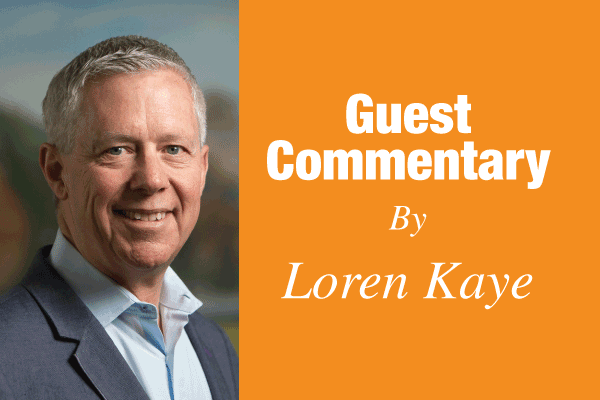
It’s a problem, but not a crisis.
The state budget proposed by Governor Gavin Newsom would maintain the trajectory of state spending without major disruptions to state programs or new general tax increases. The Governor pegged the budget challenge (often called a “deficit”) at $37.8 billion projected spending in excess of projected revenues. The Governor proposes solving for this gap by reducing earlier spending increases, delaying promised increases, tapping rainy day reserves, and some targeted tax increases.
The announcement shined a more optimistic light on state finances than an earlier report by the Legislative Analyst, who had figured the budget deficit on the order of $68 billion.
Stay the Course
The picture painted by the Governor is to stay the course with a tighter belt, as opposed to dousing a five-alarm fire by deploying massive cuts, crippling tax increases and budget gimmickry. The Governor contextualized this year’s problem to be about 19% of general revenues, compared with budget crises in the recent past: the problem in 2009–10 amounted to 46.5% of revenues, and in 2003–04 was more than 52% of revenues.
Indeed, while General Fund revenues for the two prior fiscal years came in more than $35 billion below estimates, the Administration projects that revenues and transfers for the 2024–25 budget will be $18 billion higher than the current year, and that general tax collections will be $50 billion higher in 2024 than the pre-pandemic year of 2019.
“Governor Newsom is doing what private sector businesses do when faced with an imbalance between revenues and costs—making tough decisions on spending cuts, pausing funding for future projects, and ensuring that critical priorities are maintained,” said CalChamber President and CEO Jennifer Barrera. “In this year’s budget, the Governor has correctly focused on those things that will help California’s economy succeed, including making continued investments in infrastructure, education, homelessness response, and combatting retail and property crimes without raising general taxes. In particular, we appreciate that the Governor has, again, underscored that a wealth tax in California is off the table.”
Key Elements
The key elements for addressing the budget shortfall are:
• Reducing current or anticipated programs by $8.5 billion, primarily in climate change programs, housing and state operations. The Administration will also delay implementation of new programs created by recent legislation, pending updated revenue estimates in May.
• Delaying and spreading over several years currently programmed spending, mostly for infrastructure or for recent initiatives that are ramping up. These include funds for transit and new preschool and transitional kindergarten expansion, among others, amounting to more than $5 billion in solutions.
• Deploying $13 billion in rainy day reserves.
The new budget proposes about $400 million in tax increases, or about 1% of the budget solutions. The main proposal is to conform the treatment of net operating loss carryforwards to a recently enacted federal change, which creates a cap on carryforwards in any one year at 80% of that year’s net income.
Other tax increases include conformity to federal treatment of charitable conservation easements, elimination of bad debt deductions by certain nonretailer lenders, and elimination of some tax incentives for oil and gas drilling.
After solving for the budget shortfall, the Governor proposes to finance his priorities, including his multi-year plan to address homelessness, new spending to address organized retail theft and opioid and fentanyl abuse, mental health reform, and education.
A CalChamber poll released last fall found that voters were intensely concerned about public safety issues, especially identifying the fentanyl epidemic, organized shoplifting, and homelessness driving criminal behavior as high priorities for public officials to address.
Education
Even with a tight budget and declining pupil enrollment, the Proposition 98 education funding guarantee will provide a safety net for public schools. From all funding sources, public schools will receive about $23,500 per pupil.
Despite the state’s current fiscal situation, the higher education segments will also see modest funding increases. The 5% boost this year for the four-year institutions, promised by the Higher Education Compact, would be deferred for a year, although the segments would be able to borrow money to meet programmed obligations.
The Administration also signaled its intent to maintain a focus on career education. Following up an executive order from last summer, the Governor’s Office will convene high-level working groups (including CalChamber members) to investigate how existing policies, investments and structures can be improved to ensure Californians can access well-paying, purposeful careers, build skills and access lifelong quality education.
Minimum Wage Hike ‘Trigger’
Legislation last year created a new minimum wage for health care facilities, ranging from $18 to $23/hour, depending on the type of facility, that will go into effect in June. Having earlier identified a cost to the state treasury of $4 billion from this wage increase, the Governor’s budget proposes the Legislature urgently adopt an annual “trigger” to make the minimum wage increases subject to General Fund revenue availability, among other changes.
The budget proposal is now in the hands of the Legislature, which will begin hearings on the numerous items. The proposal will be modified in May based on updated economic and tax data, and the Legislature must adopt it by June 15.
Loren Kaye is president of the California Foundation for Commerce and Education, a think tank affiliated with the California Chamber of Commerce.

